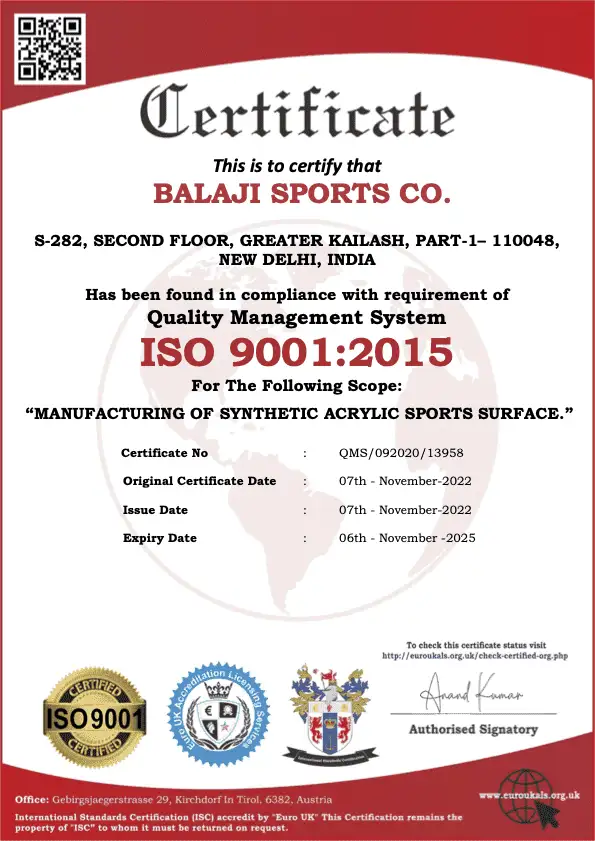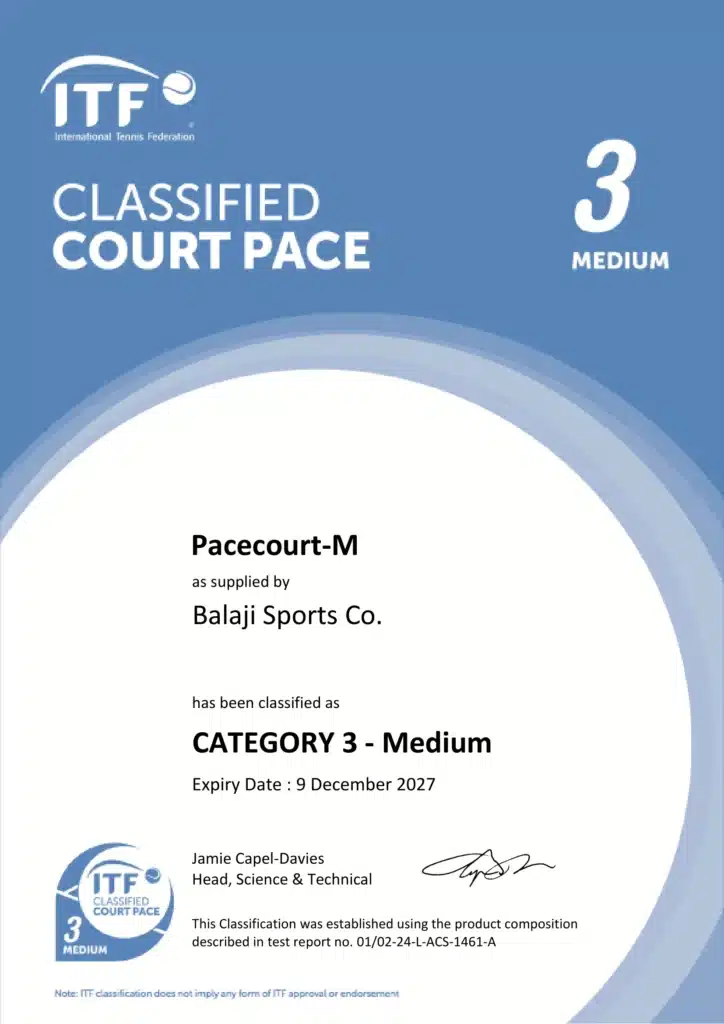How to Choose the Right Basketball Court Installers for Your Budget and Needs
Introduction A basketball court’s overall performance, longevity, and quality can all be improved by choosing the correct contractors. At Pacecourt, we recognize the intricacies involved in the acrylic laying procedure for outdoor basketball courts and the significance of enlisting the appropriate personnel to achieve the desired outcomes. The benefits of installing acrylic flooring will be discussed in this article, along with examples of real-world uses and things to look for while looking for the best basketball court installers specialists. Why Acrylic Flooring is Ideal for Outdoor Basketball Courts Acrylic flooring has become more and more popular for outdoor basketball court flooring material, because of its reliability, ease of maintenance, and suitability for many sports. It provides a level playing field that reduces the chance of injury while improving safety and traction, especially in damp circumstances. The following arguments suggest that acrylic flooring is the best surface for outdoor basketball courts: Key Considerations When Choosing Basketball Court Installers It takes more than just choosing the most accessible business to get the best basketball court installers for your outdoor acrylic surface. The caliber of the installation determines the basketball court’s effectiveness and longevity. The following factors should be taken into account when hiring installers for your project: Experience with Acrylic Flooring Choose installers of synthetic basketball court for outdoor sports areas that are qualified in the field. Their degree of experience enables them to recognize the finer aspects, such as surface preparation, acrylic layering, and finishing, that go into creating visually appealing and long-lasting courts. Reputation and Reviews In the basketball court installation industry, marketability is a factor that improves the prospects of builders. Customer feedback reveals the caliber of work that may be anticipated from the installers. Licensing and Certification Make sure the basketball court installers have the required expertise and relevant licenses before hiring them. Being licensed means the practitioners have met stipulated industry standards and local regulations; hence, the risk of poor installation is minimized. Customization Capabilities Your preferences might be taken into consideration while designing the accessories by the professionals installing the floor. This involves deciding on certain colors, applying unique artwork and trademarks, or even applying other markings to the court. Customization not only enhances the court’s aesthetic appeal but also provides it with a unique quality that other standard courts do not have. Budget Transparency and Flexibility Define the project’s budget and have a conversation about it with potential contractors. Reputable contractors will give you an affordable quote and offer options to fit your needs within your budget without sacrificing quality. While comparing entries, pay attention to the costs associated with each installation and each upkeep. The Step-by-Step Installation Process for Acrylic Basketball Courts Determining the prospective skill level of fitters is aided by their knowledge of basketball court installation. This is a quick explanation of the fitting process for an acrylic basketball court: Site Assessment and Preparation Examining the site’s area thoroughly is the first step. The installation work assessors measure the basketball court size, examine the topography, and record any potential issues that may arise throughout the installation procedure. Applying the Acrylic Layers Acrylic surfacing is a multi-coat technique that begins with a primer, continues with successive applications of acrylic sheeting, and ends with a top coat for durability. Court Line Markings and Final Touches The application of the basketball court marking paint and any additional personalized elements—like logos or business branding—comes in the last phase. Premium, UV-resistant paints are employed to guarantee the markings’ durability. Mistakes to Avoid When Hiring Basketball Court Installers For optimal results, it is important to refrain from making the following frequent errors when choosing your installers: Choosing Based on Price Alone To achieve the best results possible, it is crucial to avoid the following common mistakes during the process of selecting your installers: Not Checking Previous Work or References Before hiring an installer, check their work portfolio and contact previous clients to assess their quality of work. Ignoring the Importance of Surface Preparation Adequate court preparation is fundamental to building a long-lasting court. Make sure that your builders consider surface leveling, drainage, and base installation. Overlooking Maintenance Recommendations Engage in discussions with your installation team about the necessary upkeep and use their recommendations accordingly to extend the life of the court. How Pacecourt Ensures Quality Installation We at Pacecourt boast of providing the best basketball courts’ acrylic flooring installation services. Our proficient team advances the industry standards through various phases of the process, from auditioning the site to the finishing details, to assure the quality of every project. We know the special requirements for outdoor basketball courts and adjust our services accordingly for specific project aims. Case studies Case Study: Community Park Basketball Court Installation Project Overview Procedure Our trip began with us searching for the ideal location and setting it up appropriately. This required leveling the chosen area before removing any trees and other debris. When we were finished, we placed a concrete base with the proper slope for water drainage on top of that. Subsequently, we applied multiple layers of acrylic onto the surface before applying hoops and drawing lines. Results The basketball court was brand-new and quickly became quite well-liked in the park. It was made even more delightful by its smooth surface and vividly drawn outlines. Because of its sturdy acrylic flooring, it required minimal upkeep. The installation procedure depicted here was completed as quickly and efficiently as possible. Case Study: School Basketball Court Installation Project Overview Procedure The first steps of this project were site assessment and design. To prepare the land for construction, we graded and cleared it. The choice of asphalts is also economical. The last step of this operation was applying an acrylic surface, making precise line lines, and installing hoops. Results The school’s basketball team now has a top-notch playing surface thanks to the newly constructed outdoor basketball court flooring. The recently installed acrylic flooring provided excellent traction and high longevity. This project demonstrated the benefits of carefully













